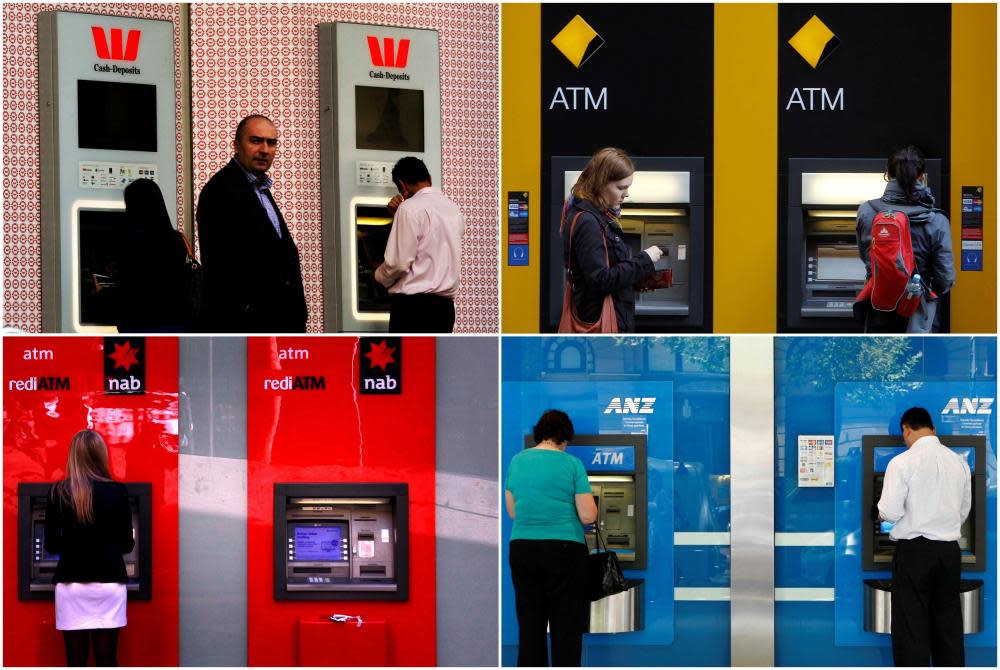Can Australia’s banks withstand the contagion stalking the global finance sector?

Australian banks are susceptible to a shock – but not necessarily for the reasons you think.
Fallout from recent financial turmoil in the US and Europe is rattling investors and raising questions over the health of the global economy.
After the notable fall of the embattled Credit Suisse, which required a Swiss government-backed buyout from UBS, investors have been scouring the market for contagion.
Germany’s biggest lender, Deutsche, wobbled under the weight of relentless selling last week, leaving analysts struggling to explain the concern, given the bank is profitable, unlike its Swiss counterpart.
Will Australian banks be next?
Last week, Germany’s banking regulator said the main threat to Europe’s banking markets sector was “contagion via psychology of markets”.
It’s a fitting descriptor for Australia also.
Related: Australian banks ‘unquestionably strong’ despite global uncertainty in sector, RBA says
There’s little to tie Australian lenders to the woes suffered at the collapsed California-based Silicon Valley Bank (SVB) or Credit Suisse, other than they are operating in similar inflation-fuelled, higher-interest rate markets as have captured most of the world.
Notwithstanding a sudden revelation of bad debts or poor practices, Australian lenders appear sound, given they are working under different regulations, have liquidity, are well capitalised, and have also just recorded bumper profits.
The assistant treasurer, Stephen Jones, told an AFR banking conference on Tuesday that Australian banks were not near bankruptcy, while the prudential regulator said they had all passed a stress test and could withstand a major downturn.
As a general principle, one of the upsides to having a less competitive banking industry in Australia than in the US is that they tend to better handle turbulent periods, in part because of their fatter margins.
But the swift fall of SVB and Credit Suisse, and selling pressure on Deutsche, shows that banks are susceptible to a swift change in sentiment, especially if enough people withdraw their savings, which the banks rely on to operate.
So there’s nothing to worry about?
Not so fast. The seeds of a shock to the sector have been planted; the question now is whether that will grow into something big enough to pose a threat to bank stability and the broader economy.
The health of Australia’s big and small banks is intimately tied to mortgages, which are their main money spinners. And there is growing concern for home loans taken out between 2019 and early 2022.
At the time, property prices were humming in most major cities and interest rates were as close to zero as Australians are ever likely to see.
Related: Australian banks are finally passing on interest rate hikes to savers – but there’s a catch
Homebuyers were assessed on their ability to meet mortgage repayments with a bank test “serviceability” buffer of 2.5% above the rate they took out their loans.
Starting in May last year, the Reserve Bank lifted the official cash rate at 10 consecutive meetings, representing 3.5 percentage points, all of which have been passed on to borrowers.
This means those borrowers were not assessed to meet today’s lending requirements and they likely don’t have much, or in some cases any, equity in their homes to draw on.
Many of those borrowers took advantage of ultra low rates by taking out fixed rate loans; two-thirds of those fixed loans are turning over into much higher interest variable rates in 2023.
Is this a problem?
While foreclosures are still at low levels, there are plenty of early warning signs.
The number of people getting more than 90 days behind on their repayments is rising, albeit from modest levels, according to data from residential mortgage backed securities.
Struggling mortgage holders are also shifting to interest-only loans.
“There’s conversations happening with many, many customers who’ve already started to feel the pinch about transferring into an interest-only period, restructuring the loan, maybe lengthening the loan,” Anna Bligh, chief executive of the Australian Banking Association, told the business forum on Tuesday.
Related: Early career essential workers unable to afford house prices anywhere in Sydney and Melbourne
Bligh added that the banks didn’t expect the pressure to be as severe as the relief required for households early in the pandemic.
The other significant early sign of homeowner stress is a rapidly depleting savings ratio in Australia, which indicates that households are digging into their accounts to meet expenses, including loan repayments.
Some households will be able to refinance, but that option is not readily available for those who don’t have the income to service their loans. Those homeowners might also be stuck on an uncompetitively high mortgage rate.
What happens next?
Switching to interest-only loans and using savings to meet mortgage repayments are not long-term solutions, so there will need to be a circuit breaker to get those households back on track.
Higher wages and lower interest rates would help ease the growing stress, but neither are guaranteed in the medium term.
“My worry is there’s no real get-out-of-jail card,” said Martin North, principal of Digital Finance Analytics.
“I don’t see that incomes are going to grow in real terms. I think inflation is going to stay high. I think interest rates are going to stay high.”
Significant defaults in that 2019-22 mortgage cohort would pose a test to the banks, and broader Australian economy, although a potential shock is unlikely to be imminent given the ability of most households to navigate short-term strains.
There is also a lag between when the Reserve Bank raises the official cash rate and households starting to pay the increased amount that lenders have been passing on.
Many in the banking sector expect the pressure on households – and tests for lenders – will come in 2024, and it will have nothing to do with SVB.
With Peter Hannam

 Yahoo News
Yahoo News 
